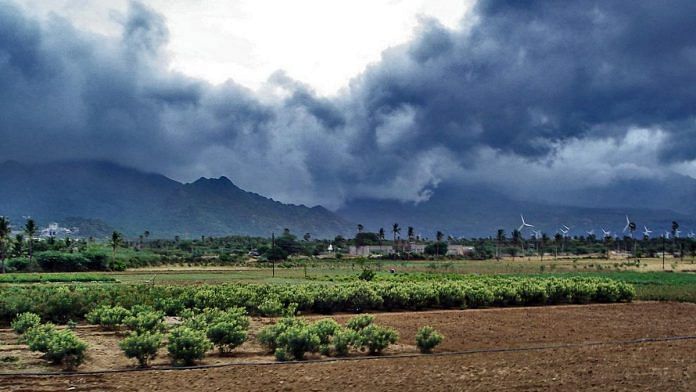New Delhi: The Indian Meteorological Department (IMD) said Monday that the second half of the southwest monsoon, from August to September, “is most likely to be normal” for the country as a whole.
The Met department predicts rainfall will be between 94 to 106 per cent of the Long Period Average (LPA) of 422.8 mm, calculated from 1971 to 2020.
Though overall rainfall is projected to be “normal,” this will not be uniformly so, the IMD’s prediction shows.
Between August and September, most parts of south India is likely to see normal to above normal rainfall. However, below-normal rainfall is expected over much of the west coast and some parts of east-central, east, and northeast India
The month of July concluded with an overall excess of 8 per cent rainfall, though the distribution was uneven.
Going by the forecast, the northeast region — parts of which saw excess rainfall in June and then deficient rainfall in July — may not receive adequate rainfall in the next two months either.
M. Mohapatra, director-general of the IMD, said rainfall in July over the northeast and eastern regions was the lowest in 122 years.
“Some deficiency may remain in Bihar, some northeastern states, and other parts of the Indo-Gangetic plains. Above normal or excess rains are not expected for the region,” Mohapatra added at a virtual press conference Monday.
This could also spell bad news for paddy cultivation, which has already been hit by an erratic monsoon.
Also Read: Food worries mount for India, as erratic monsoon rains cause 13% lag in area under paddy
The month ahead
In August, the IMD says the southeast, northwest, and the adjoining west and central parts of India are likely to see normal to above normal rainfall, while the west coast and “many parts of east central, east and northeast India,” will be deficient.
La Nina conditions are likely to prevail till the end of the year, the IMD says.
La Niña is a global weather phenomenon that causes the surface ocean waters along the tropical west coast of South America to cool. La Niña causes lower air pressure over the Western Pacific, which generally causes higher rainfall.
In terms of the mercury, the IMD has predicted that many parts of east-central, east, and northeast India and some parts of northwest and south interior peninsular India will see above-normal maximum temperatures. Normal to below-normal maximum temperatures are likely over the remaining parts of the country.
(Edited by Asavari Singh)
Also Read: Why Pakistan is facing a deluge while parts of India are seeing drought-like conditions






